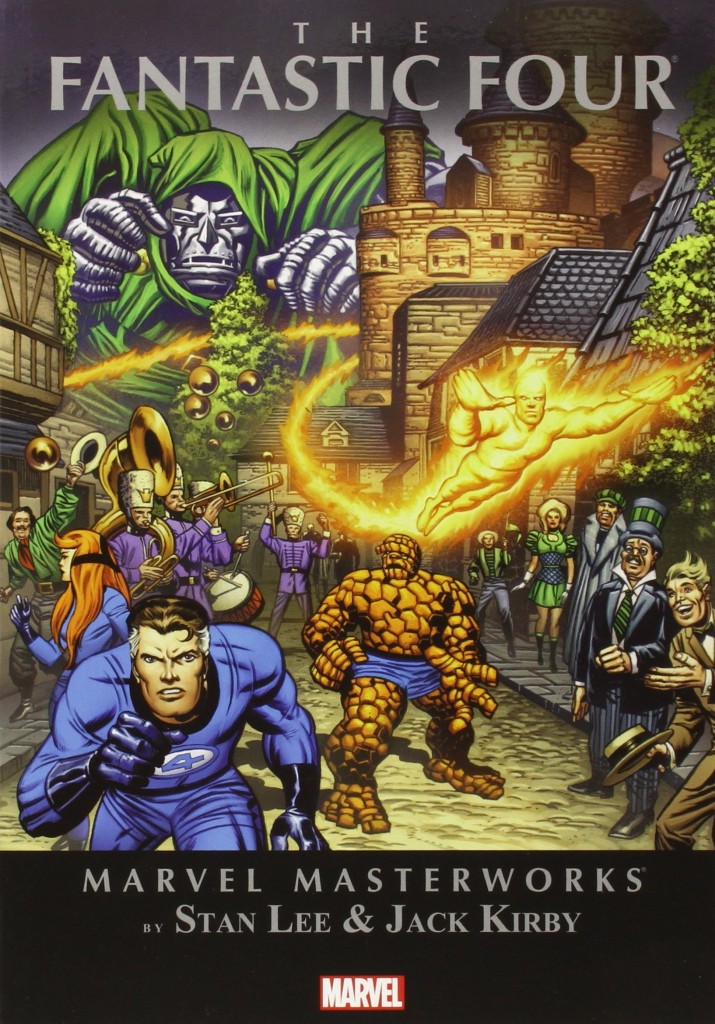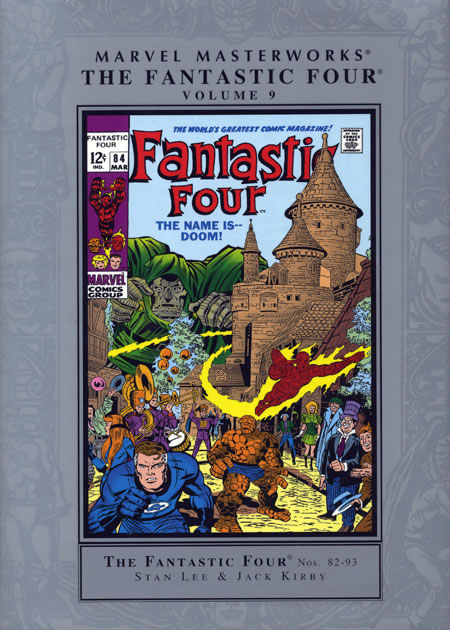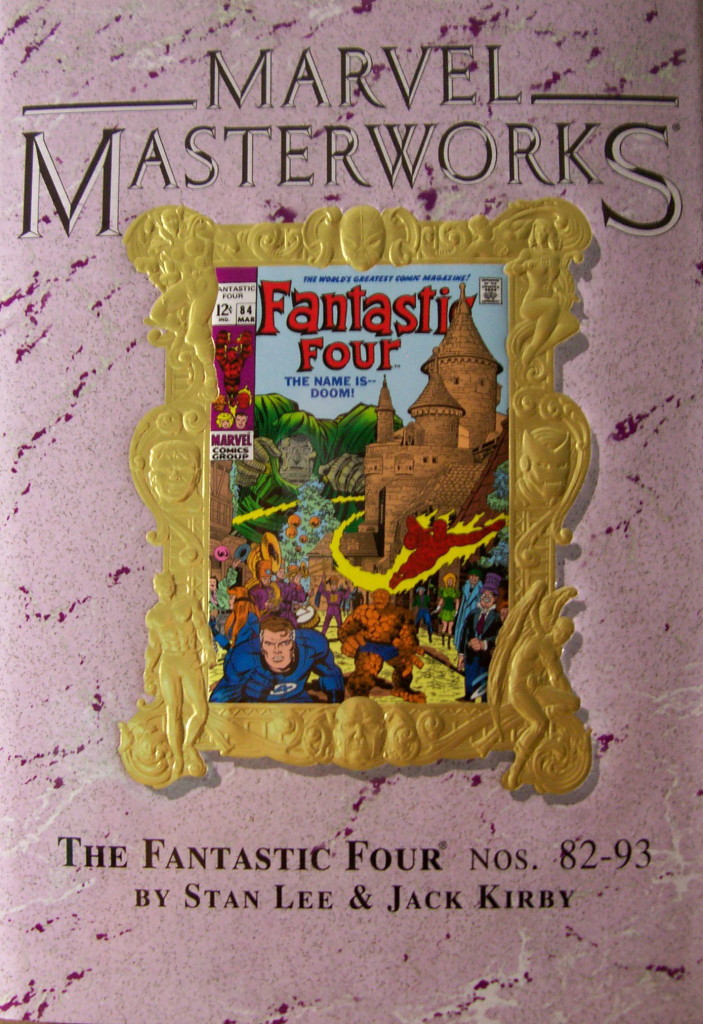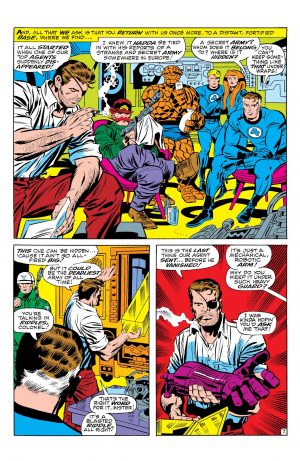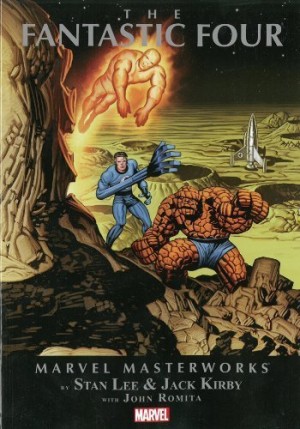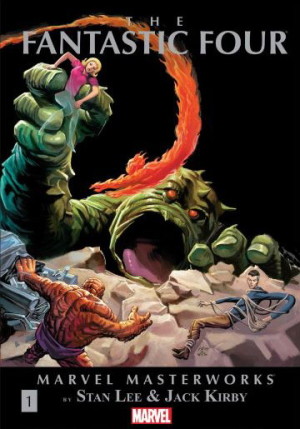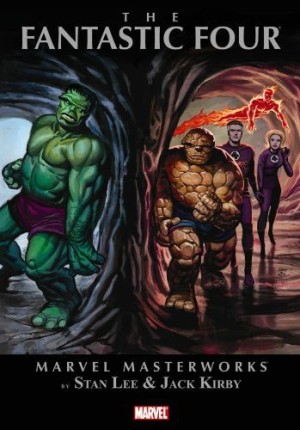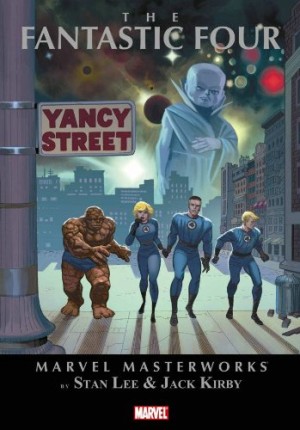Review by Graham Johnstone
This is the penultimate volume of Stan Lee and Jack Kirby’s decade long run on Fantastic Four, “The World’s Greatest Comic Magazine” as the covers had it.
With Invisible Girl busy with the new-born Richards’ baby, Torch’s girlfriend Crystal takes her place in the team. The first two stories involve a trip to seek permission from her family – the self-styled Inhumans. We find them imprisoned by Maximus the Mad, who has seized the throne, and is casting an ambitious eye on the outside world. The FF aid Crystal’s family and restore the previous more benign order, yet don’t appear to discuss the situation about Crystal.
While most of the Fantastic Four’s earthly foes seem gentlemen in a game of cricket, Dr Doom is a convincing psychopath. Psychologists see trauma as a key component of what makes a psychopath, and that’s there in the disfiguring accident trapping him in a metal suit and mask. He rules fictional central European kingdom Latveria, with a (literal and figurative) iron hand, ensuring smiling displays of devotion with the very real threat of execution. To test his new robots he sends them to destroy a village and kill the citizens. He’s also Machiavellian – endlessly contriving and manipulating situations, like the escape of rebels in a conveniently placed armoured tank, only to display his new weapons destroying it. For the FF he plans to hypnotically instil a disabling fear of their own powers, trapping them in the village forever as living monuments to his power and victory. It’s perhaps indirectly inspired by the novels of Franz Kafka, more likely via contemporary TV show The Prisoner, for which Kirby would later draw pages for an abortive Marvel series.
Kirby by this time was unhappy at Marvel, feeling insufficiently recognised or rewarded for his work. He had been plotting the stories for years, and created supporting characters that remain lucrative properties fifty years later. He was already in contract negotiations with rivals DC, which may explain the relative lack of new ideas, and dependence on returning characters. Stories also run longer, with everything extended over at least two chapters.
It’s been reported elsewhere that Kirby channelled his experiences in the comics industry into his material – the brutal yet forcibly upbeat regime of Granny Goodness in Mister Miracle for example. Looking for signs of disenchantment here, it seems confirmed. Take the titles for a start: ‘Within This Tortured Land!’, ‘Victims!’, ‘The Thing Enslaved’. You can read it into the four storylines too. The Inhumans story is about a ‘mad’ dictator, and the Dr Doom story about a calculating dictator. In the Mole Man story the very house the FF live in is a trap intended to destroy them. Finally, The Thing is kidnapped to the Skrull planet to be a slave/gladiator, which ends with him fuelling a Spartacus style slave uprising.
The FF are hypnotised to lose their powers, and then temporarily blinded. There’s also a previously unseen element of ruthlessness to the FF here, as new mother Sue throws off the Mole Man’s protective glasses, exposing his sensitive subterranean eyes to the sun, before thrusting his face into the ground. When cornered, the Mole Man is apologetic, pleading, manipulative, for just long enough to escape her grip.
Still, personal woes or not, that adds up to some gripping story-lines to accompany the typically dynamic Kirby art. It’s elegantly inked here by Joe Sinnott and, on the last story, Frank Giacoia.
These stories also appear in the budget black and white Essential Fantastic Four 5, and the deluxe Omnibus 3.
